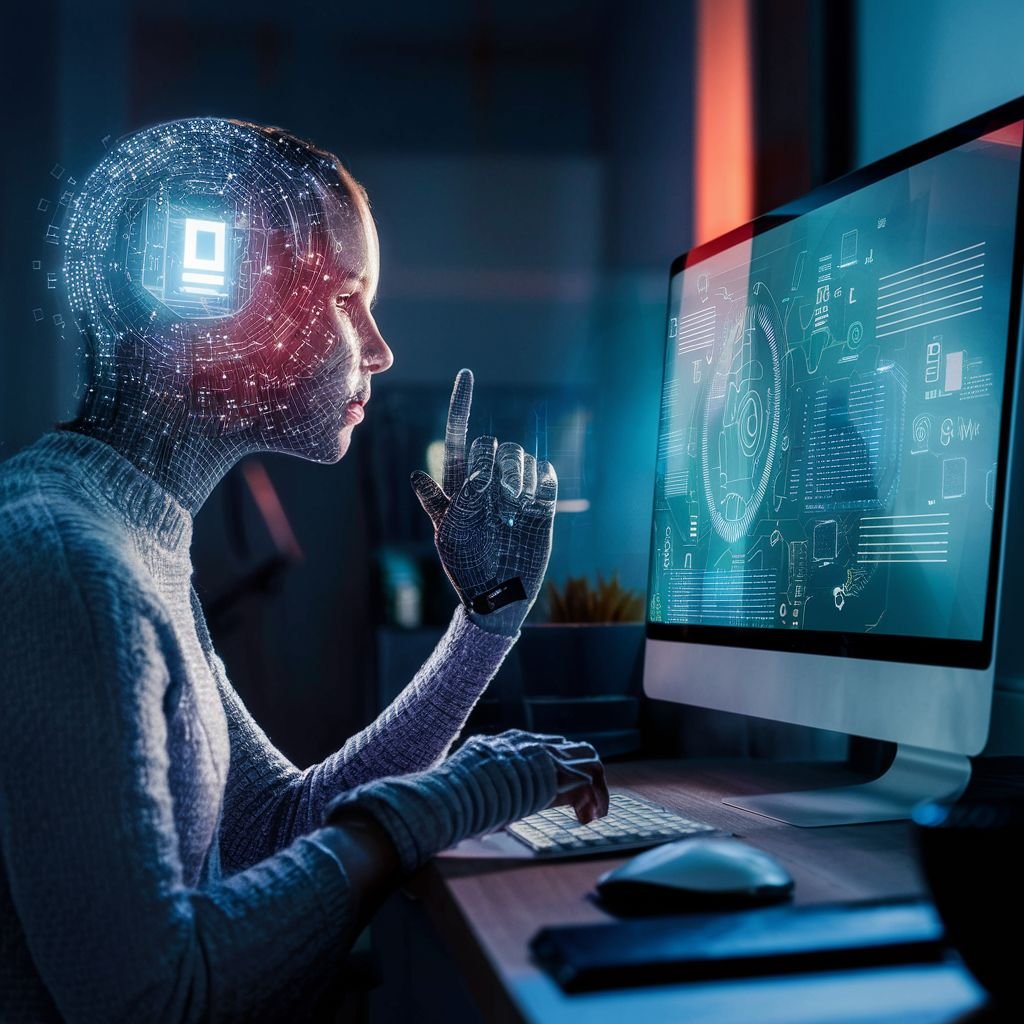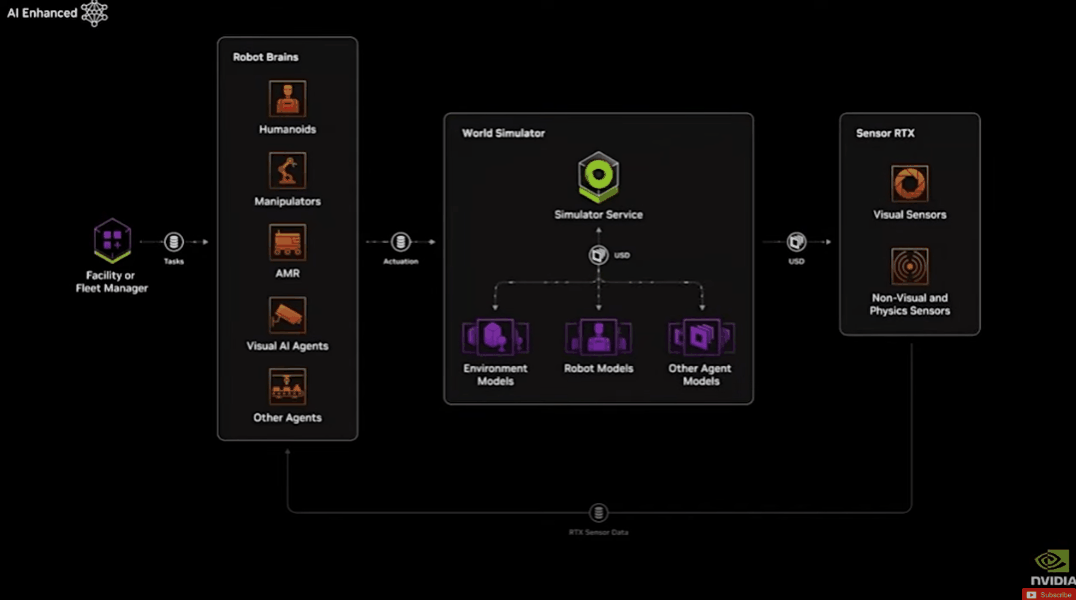Artificial Intelligence (AI) is a fascinating field of science, and philosophy, rapidly advancing since the release of ChatGPT in 2022. AI, and specifically AGI (Artificial General Intelligence), should theoretically be able to complete most tasks faster and better than humans while continually improving.
Concepts:
Tools
Writing & Voice
Text to Image
Text to Video & 3D
Audio / Music
Virtual Agents
Embodiment & Robots
New Era
Capabilities
Power consumption
Impact on Civilization
Philosophy & Ethics
Universal Basic Income
Jobs & Creativity
-
Artificial Intelligence (AI), and specifically Artificial General Intelligence (AGI) is a technology -powered by computer chips, data, engineering, and electricity - which has the potential to parallel human intelligence and even surpass human abilities. Here are 50 AI Terms
-
A large language model (LLM) is a super-powered computer program trained on massive amounts of text data. This training allows it to understand and generate human language, which lets it do things like answer questions in a comprehensive way, translate languages, write different kinds of creative content, and organize ideas.
-
Machine Learning is when computer systems are designed to automatically improve their performance through practice just like humans. With simulated experiences, AI can repeatedly practice with super-human speed and learn quickly. Machine learning (ML) is a type of artificial intelligence (AI) that focuses on getting computers to learn from data. Instead of needing explicit programming for every task, ML algorithms improve at a specific job by analyzing data allowing them to identify patterns and make predictions on new data.
-
Neural networks are computer systems inspired by the structure and function of the human brain. They consist of interconnected nodes called artificial neurons that loosely mimic the biological neurons in our brains. These artificial neurons are arranged in layers, and connections between them simulate the synapses that allow neurons to communicate.
Neural Networks learn by processing data and adjusting the connections between the artificial neurons. This allows them to identify patterns and improve their performance on tasks like image recognition or speech translation.
-
Natural language processing (NLP) is a field of artificial intelligence (AI) that deals with computers' ability to understand and manipulate human language. Imagine it as teaching computers to speak our language. NLP lets computers process information from text and speech data, allowing them to do things like:
Understand the meaning of language: Analyze the sentiment of text (positive, negative, neutral), identify the main ideas in a document, or recognize the intent behind a question.
Interact with humans in natural language: Respond to voice commands, translate languages, or generate chatbots that can have conversations.
Extract information from text: Summarize large amounts of text, categorize documents by topic, or answer questions based on written passages.
NLP uses a combination of techniques, including machine learning and statistical methods, to break down human language into its building blocks and understand the relationships between words. This is a challenging task because human language is full of complexities like slang, sarcasm, and ambiguity. But NLP is constantly evolving and improving, making it a powerful tool for various applications.
-
The fundamental building blocks of text data used by AI, for processing information, especially in Natural Language Processing (NLP). Imagine a sentence being broken down into individual words, punctuation marks, or even parts of words. Each of these pieces is a token. By tokenizing text, AI systems can more easily understand the structure and meaning of language.
In addition to information processing, tokens as digital assets in Cryptocurrency are used within specific AI projects or platforms built on blockchain technology. Similar to other cryptocurrencies, they can be used for transactions or governance within the project. For instance, they might allow users to access AI services, pay for data, or even vote on decisions that affect the project's development.
-
AI Needs Muscle: Training complex AI models, especially deep learning models, involves processing massive amounts of data. This requires a lot of computational horsepower.
More Power, More Progress: The recent surge in AI capabilities goes hand-in-hand with the exponential growth in computing power. We're talking about hardware like specialized GPUs (graphics processing units) that can handle these demanding tasks efficiently.
Not Just Throwing Power at the Problem: It's important to note that just throwing more and more compute power isn't always the answer. Researchers are also focusing on making AI algorithms more efficient and finding ways to train them with less data.
It's a Race: There's a constant push to develop even more powerful computing resources to support the growing demands of AI. This race for compute power has major implications, from who has access to these resources to the environmental impact of running massive AI models.
In essence, compute power is a critical ingredient for AI development, but it's not the only factor. Researchers are constantly working on optimizing algorithms and finding ways to make the most of the processing power available.
-
1. What is artificial intelligence (AI), and how does it differ from human intelligence?
2. How do Large Language Models like Chat GPT work, and what are some applications they can be used for?
3. How does machine learning play a role in training AI models like GPT-3?
4. What are the ethical considerations surrounding the use of AI and Large Language Models?
5. How can AI models impact industries such as healthcare, education, and entertainment?
-
6. How do AI algorithms learn from data, and what is the importance of high-quality training data?
7. What are some potential benefits and drawbacks of using AI for decision-making?
8. How can AI models like GPT-3 be biased, and what steps can be taken to mitigate bias?
9. What role does human oversight and control play when using AI systems?
10. How do AI models understand and generate human-like text, and what are some challenges in this process?
11. How can AI and automation affect the job market and employment opportunities?
12. What are the differences between narrow AI (focused on specific tasks) and general AI (human-like intelligence)?
13. How do researchers and engineers improve the performance and capabilities of AI models over time?
14. What is the Turing Test, and how does it relate to evaluating AI's ability to mimic human conversation?
15. What are some potential risks associated with the rapid advancement of AI and its potential for misuse?
16. How does AI contribute to data analysis, pattern recognition, and prediction in various fields?
17. How can AI be used to enhance personalized learning and education systems?
18. What is the concept of explainability in AI, and why is it important for transparency?
19. How can AI models understand and generate text in multiple languages and styles?
20. How do concerns about privacy and data security intersect with the use of AI and personal information?
21. How can AI models like GPT-3 contribute to creative writing, storytelling, and content creation?
22. What are the limitations of current AI models, and what areas of improvement are researchers working on?
23. How do ethical considerations change when AI models are used to create content or simulate human conversation?
24. How can students get involved in learning about AI, coding, and machine learning at a young age?
25. How might AI and Large Language Models evolve in the future, and what potential societal impacts might arise?
-
Add a short summary or a list of helpful resources here.

